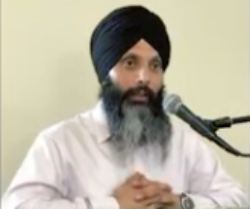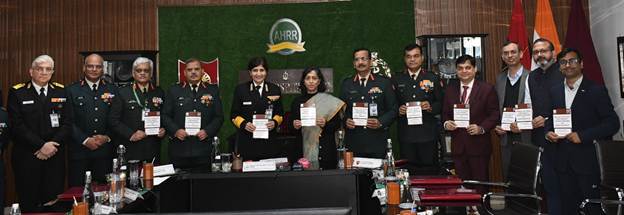
Khalistan Tiger Force chief Hardeep Singh Nijjar who was shot dead in Canada on June 18, 2023
Spotlight: Payback time for pro-Khalistan forces?
 By Venkatesh Raghavan
By Venkatesh Raghavan
It seems like payback time for different pro-Khalistan militant Sikh organizations like the Khalistan Tiger Force (KTF) and Khalistan Commando Force (KCF) during the course of the previous six months. The killing of KTF chief, Hardeep Singh Nijjar by unidentified gunmen in the car-parking area outside a gurdwara in Surrey, Canada at around 8.27 pm (local time) on Sunday, June 18, 2023, has raised a hue and cry among the ranks of the World Sikh Organization in Canada, alleging that Indian intelligence was behind it.
The killing is not being eyed in isolation, as it comes close on the heels of a sequel of Sikh militants’ deaths on foreign soils. Earlier this year, on May 6, a KCF outfit chief, Paramjit Singh Panjwar was gunned down by unidentified assailants, while on a routine morning walk near his Sunflower Society residence in Lahore. The death of Avtar Singh Khanda, another of the handlers of Sikh militant outfits, in a United Kingdom-based hospital the previous week, though reportedly owing to blood cancer, has spread a smear of conspiracy theories alleging poisoning to death.
The spree dates back to January this year, when Harmeet Singh the handler of terror training outfits for radical Khalistani youth, was killed in Lahore at a Gurudwara premise. The death toll of terrorist commanders hailing from different Khalistani outfits has so far claimed four lives. The Canadian world body for Sikhs informed the local intelligence organization that prior to his being gunned down, Nijjar had already expressed fears of being targeted by the Indian intelligence outfit.
Interestingly, the death trail seems to be a retaliatory streak after pro-Khalistani terror modules based in foreign soils including the United States, Pakistan, the United Kingdom, Canada and Australia had brazenly fanned anti-India sentiments, seeking to spearhead a separatist movement for a liberated Khalistan. Protestors marching with pro-Khalistan posters and violent attacks on Indian missions constitute a part of their bid to fan the separatist movement. Even the Indian tri-colour flag was not spared. The secessionist elements in London made a violent attempt to pull down the tri-colour that was atop the Indian mission located in the UK’s capital city.
In addition to attacks on Indian missions, places of religious worship have also been targeted. In Australia, nearly five temples were vandalized by the Sikh militant groups. The miscreants subsequently placed a Khalistani flag outside the temple premise. Indian Prime Minister Narendra Modi himself raised his concerns over the issue of temples getting desecrated on Australian soil with their government. Subsequently, the Australian government withheld permission for holding a propaganda meeting slated to be held by the Sikhs for Justice Group.
Closer home, there is a high alert kept on Khalistani separatists resorting to narco-terror by smuggling in narcotic drugs from Pakistan across the Indian border. The smuggling outfits attempt to infiltrate Indian soil with sophisticated ammunition besides narcotic drugs. A watch is also being kept on the usage of cyberspace and the funding modules that run the web space.
The deaths of militant leaders from the Khalistani fold got precipitated soon after Indian authorities had sounded their battle cry, stating, “We will take strong action against the terrorist outfits.” The government’s vows to take stern action have resounded in the corridors of power.
*Senior journalist





